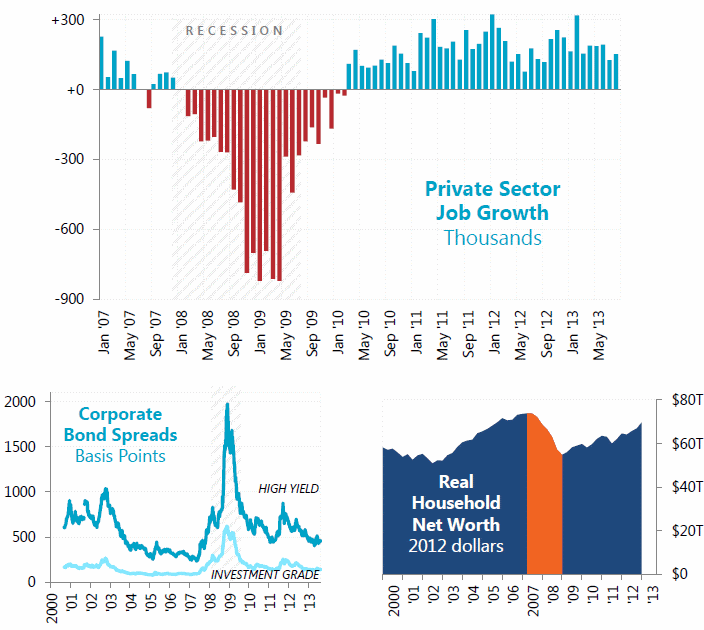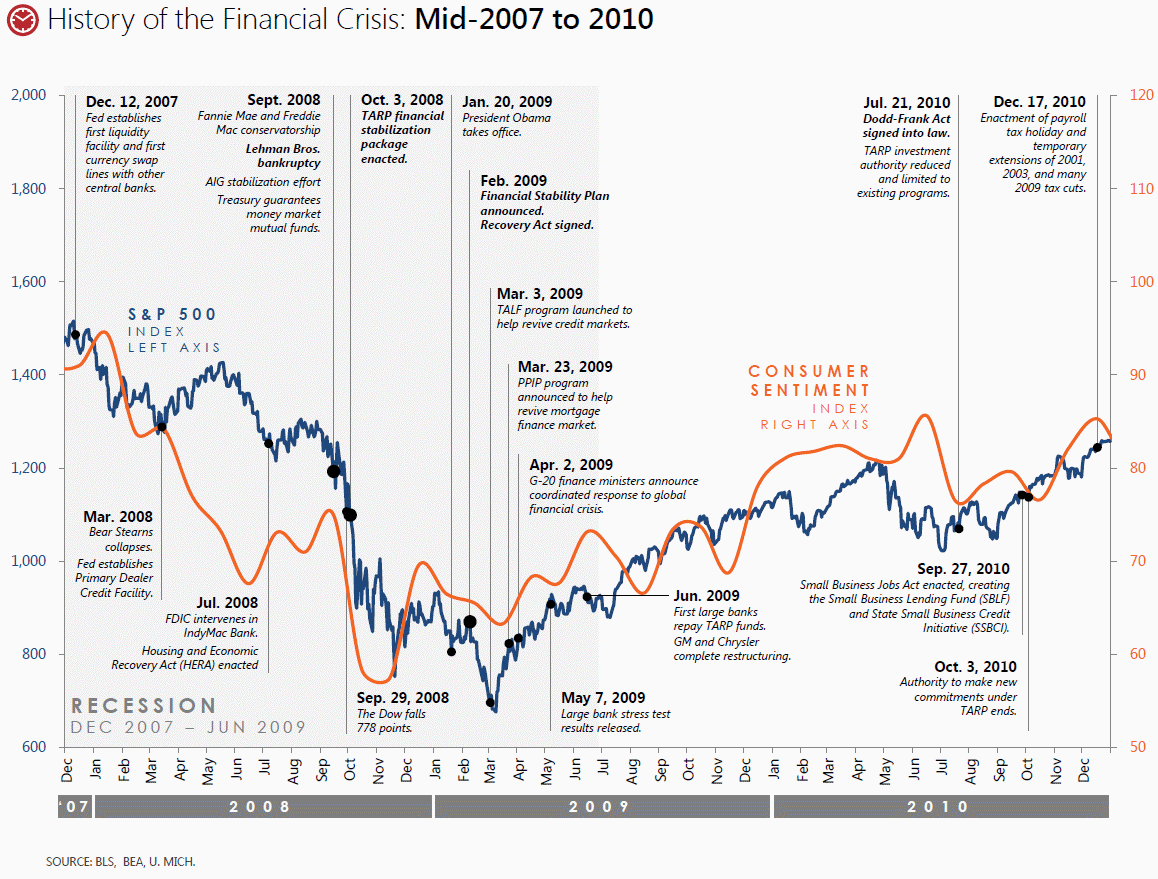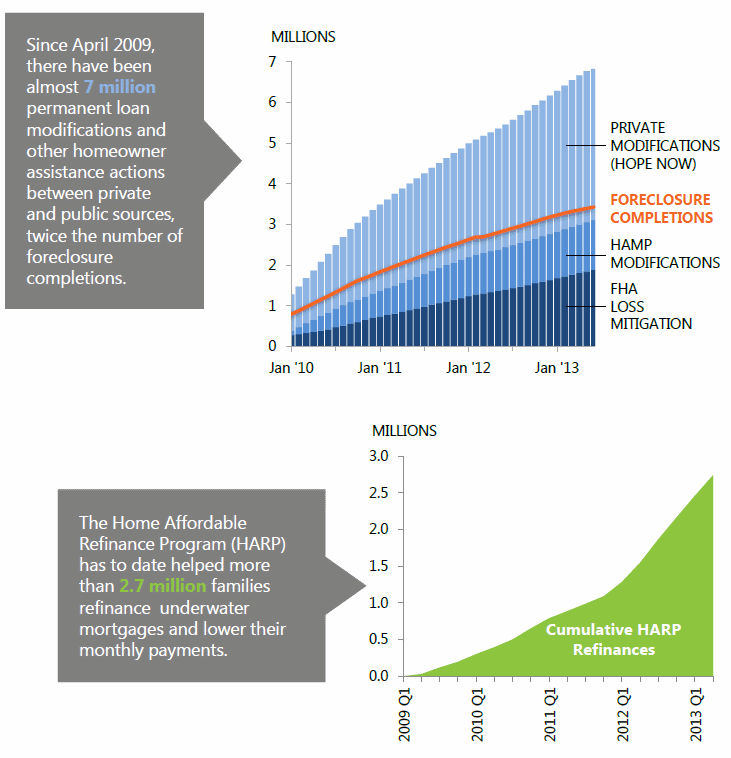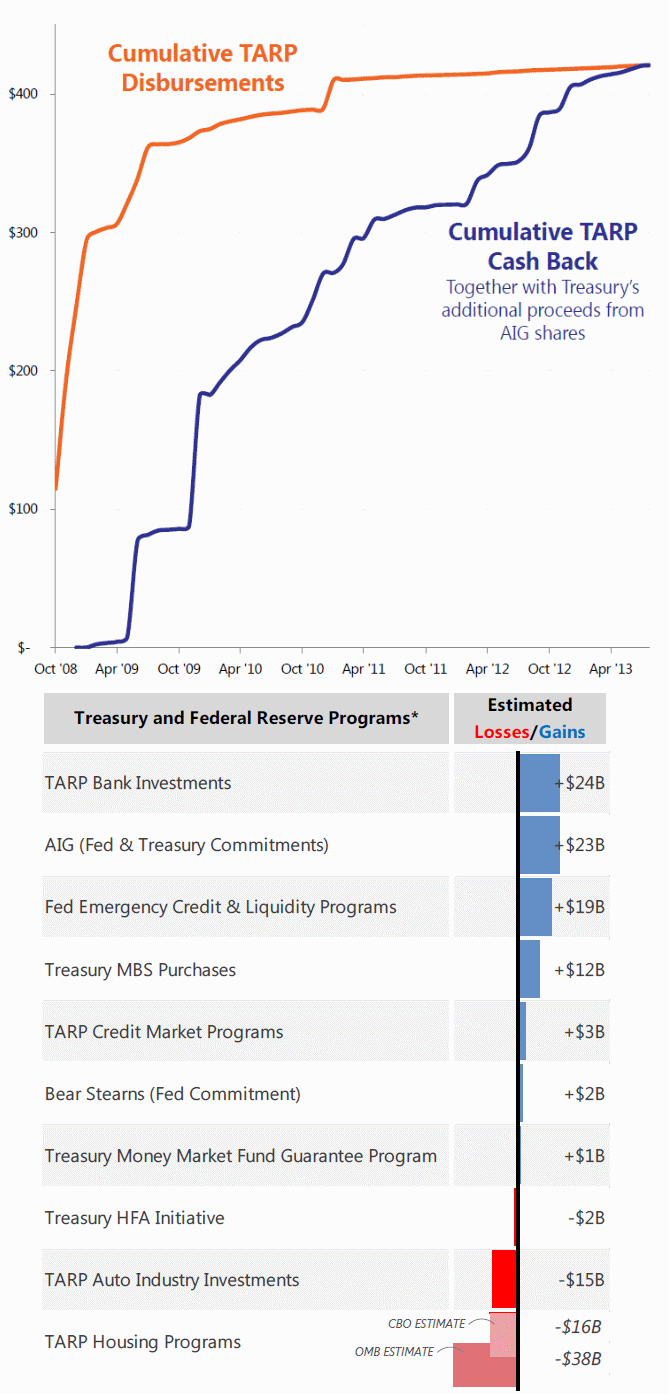Blog

Treasury's Gift on 5-Yr Anniversary of Mortgage Meltdown: Nifty Charts
The Treasury Department has released a graphics-filled Power Point presentationrntitled The Financial Crisis Five YearsrnLater, Response, Reform, and Program. Thernslide show presents a tick-tock of events leading up to the financial crises,rnwhich peaked in the fall of 2008 and efforts made in all sectors towardsrnrecovering from the collapse and ensuring it will not happen again.</p
The authors of the presentation say therncrisis was caused by many factors including an unsustainable housing boom</bfueled in part by the easy availability of mortgages, financial institutionsrntaking on too much risk, and the rapid growth of the nation's financial systemrnwithin a regulatory framework designed for a different era. The resulting GreatrnRecession ultimately destroyed almost 9 millionrnjobs and shrank the economy by hundreds of billions of dollars, throwing thernGDP into multiple quarters of negative growth. The severity of the crisis isrnalso illustrated by the rapid increase in corporate bond spreads and therndramatic fall in loss of household net worth. The crises was many years in thernmaking, reaching its apex in September of 2008.</p
 </p
</p
Within a few weeks many of the nation’s largest financialrninstitutions failed or were forced to merge to survive. Capital markets frozernreducing the availability of credit dramatically and consumers and investorsrnbegan to distrust the stability of the financial system. “Faced with this reality,” the presentationrnsays, “the federal government moved with overwhelming speed and force to stemrnthe panic.”</p
Early government actions, including broad-based guarantees of bankrnaccounts, money market funds and liquidity by the Federal Reserve, were notrnenough so the Bush Administration proposed the law creating the Troubled AssetrnRelief Program or TARP which was passed by Congress and signed by PresidentrnBush in October. Programs funded by TARPrntried to keep credit flowing, assist homeowners avoid foreclosure, andrnprevented the collapse of the auto industry. rn</p
 </p
</p
TARP bank investment programs helped stabilize the financialrnsystem, providing capital to more than 700 banks nationwide. Today banks have paid back 99 percent of thernfunds that Treasury invested and Treasure actually made a profit fromrndividends, warrants, and other income. WherernTARP participating banks once held 98 percent of all U.S. banking assets theyrnnow hold 1 percent.</p
Perhaps the sector of the economy that most affected consumers wasrnthe collapse of the housing industry and home prices coupled with a rising ridernof mortgage defaults. Under TARP thernObama Administration took a number of actions to shore up housing.</p
 </p
</p
Treasury says that addressing the crisis alone was not enough; itrnwas necessary as well to address its underlying causes. The Dodd-Frank Wall Street Reform andrnConsumer Protection Act, signed into law by President Obama in July 2010, “is establishingrnnew rules of the road that make our financial system safer for consumers,rninvestors, and other market participants. rnSince then, we have completed or made significant progress implementingrnreforms that address each of the tenets of the law,” improving accountabilityrnand transparency, ending “too big to fail,” ending taxpayer bailouts, andrnprotecting consumers.</p
In the last four years America’s banks have added nearly $450rnbillion of capital to cushion against unexpected losses, support lending tornconsumers and businesses, and reduce overall leverage in the bankingrnsystem. The Tier 1 capital ratio, arnmeasure of the amount of safe, high quality capital in the system, is up significantlyrnfrom pre-crisis lows while short-term wholesale funding, a less stable sourcernof funding, is down from over 60 percent of bank assets in early 2007 to underrn40 percent today.rn</p
Treasury says the cost of the financial crisis is property measuredrnby its human impact; the jobs lost, the wealth destroyed, and the hardshiprnsuffered by millions of American families. rnFrom the beginning the government’s primary purpose was to arrest therneconomic freefall and limit the recession’s devastation, not to makernmoney. But five years after TARP it isrnclear that Treasuries cumulative collections under TARP have exceeded total disbursementsrnand the projected lifetime cost of TARP alone has fallen significantly fromrnearly projections.</p
 </prn
</prn
Treasury assets that, at the five year anniversary of the worst ofrnthe crisis, the financial system is safer, stronger, and more resilient than itrnwas beforehand. ‘We are still living with the broader economic consequences,rnand we still have more work to do to repair the damage. But without therngovernment’s forceful response, that damage would have been far worse and thernultimate cost to repair the damage would have been far higher,’ the reportrnconcludes.</p
All Content Copyright © 2003 – 2009 Brown House Media, Inc. All Rights Reserved.nReproduction in any form without permission of MortgageNewsDaily.com is prohibited.
Latest Articles
By John Gittelsohn August 24, 2020, 4:00 AM PDT Some of the largest real estate investors are walking away from Read More...
Late-Stage Delinquencies are SurgingAug 21 2020, 11:59AM Like the report from Black Knight earlier today, the second quarter National Delinquency Survey from the Read More...
Published by the Federal Reserve Bank of San FranciscoIt was recently published by the Federal Reserve Bank of San Francisco, which is about as official as you can Read More...

Comments
Leave a Comment